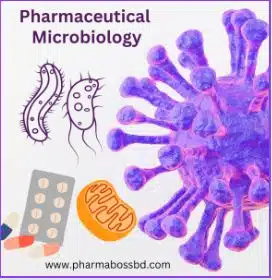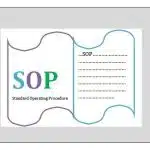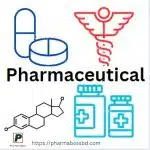Pharmaceutical Microbiology plays a significant role in the pharmaceutical industry, ensuring the safety and quality of pharmaceutical products.
Table of Contents
Introduction
Microbiology has an applied subfield that includes pharmaceutical microbiology. It involves the study of microorganisms involved in the production of pharmaceuticals, such as reducing the number of microorganisms in a process environment, removing microorganisms and microbial byproducts from water and other starting materials, and making sure the pharmaceutical product is sterile. Microorganisms are used in the production of pharmaceutical products like insulin and human growth hormone, as well as in the study and the creation of anti-infective agents and the identification of potential drugs that exhibit mutagenic and carcinogenic properties.
key Aspects of Pharmaceutical Microbiology:
There are many key aspects of Pharmaceutical Microbiology in the Pharmaceutical Industry.
Sterility Assurance
Aseptic Processing:
Aseptic techniques are employed during the manufacturing of sterile pharmaceutical products to prevent contamination. This includes the use of clean rooms, isolators, and sterilization methods to ensure the absence of viable microorganisms.
Sterility Testing:
Products labeled as sterile must undergo sterility testing to verify the absence of viable microorganisms. This is typically done using culture-based methods or more modern rapid sterility testing methods.
Environmental Monitoring
Clean room Monitoring:
Regular monitoring of clean room environments is essential to ensure that microbial contamination is kept within acceptable limits. This includes air and surface monitoring to detect and address any potential sources of contamination.

Microbial Limits Testing
Raw Materials and Finished Products:
Pharmaceutical raw materials and finished products are tested for microbial contamination to ensure they meet specified microbial limits. This involves testing for bacteria, yeast, and mold.
Bioburden Control
Bioburden Testing:
Bioburden refers to the total microbial count present on or in a product before sterilization. Bioburden testing is conducted to establish and monitor these counts.
Bioburden Reduction:
Various processes and methods are employed to reduce the bioburden on raw materials and components, including the use of antimicrobial agents, filtration, and irradiation.
Validation of Microbial Control Processes
Validation studies are conducted to demonstrate the effectiveness of processes such as sterilization, aseptic filling, and cleaning procedures. This helps ensure that these processes consistently produce sterile and uncontaminated products.
Read also: 100 Questions and Answers About Pharmaceutical
Microbial Identification
Identification of Isolates:
When microbial contamination is detected, the responsible microorganism needs to be identified. This is crucial for determining the source of contamination and implementing corrective actions.
Vaccine Production
Cell Culture Techniques: In the production of vaccines, cell cultures are often used. Maintaining the sterility of these cultures is critical to ensure the safety and efficacy of the final vaccine product.
Regulatory Compliance
Pharmacopeial Standards:
The pharmaceutical industry adheres to pharmacopeial standards (e.g., BP, USP, EP) that provide guidelines and specifications for microbial testing and control.
Quality Control and Quality Assurance
Batch Release Testing:
Microbiological testing is part of the quality control process to release batches of pharmaceutical products. This ensures that the products meet the required standards before reaching the market.
Emerging Technologies
Rapid Microbiological Methods:
The industry is increasingly adopting rapid microbiological methods for quicker detection and identification of microorganisms, improving efficiency in monitoring and control processes.
Overall, microbiology is integral to maintaining the safety, efficacy, and quality of pharmaceutical products, and it plays a central role in regulatory compliance within the industry.
Research and Development
Microbiologists in the pharmaceutical industry are involved in research and development activities, including the development of new antimicrobial agents, formulations, and methods for microbial detection and control.
Antimicrobial activity and disinfection
Antimicrobial activity and disinfection play significant roles in the pharmaceutical industry to ensure the safety and quality of pharmaceutical products. Contamination by microorganisms such as bacteria, viruses, and fungi can compromise the efficacy and safety of pharmaceutical products, leading to potential health risks for consumers. Therefore, it is essential to implement robust antimicrobial and disinfection strategies throughout the pharmaceutical manufacturing process.
Read Also: SOP for Maintenance of Stock Cultures in Microbiology
Conclusion
Pharmaceutical microbiology is a dynamic and evolving field, with ongoing efforts to address emerging challenges such as antimicrobial resistance and the development of new technologies for microbial detection and control in pharmaceutical manufacturing.
Frequently Asked Questions (FAQs)
What is Pharmaceutical Microbiology?
Pharmaceutical microbiology is a specialized branch of microbiology that focuses on the study of microorganisms and their effects on pharmaceutical products. It plays a crucial role in ensuring the safety and efficacy of pharmaceuticals by preventing microbial contamination and ensuring product quality.
What role does microbiology play in the pharmaceutical industry?
Microbiology is crucial in the pharmaceutical industry for ensuring the safety and efficacy of drugs. It involves the study of microorganisms that may contaminate pharmaceutical products, raw materials, or manufacturing processes. Microbiological testing helps prevent microbial contamination, ensuring the quality of pharmaceutical products.
Why is sterility testing important in pharmaceutical microbiology?
Sterility testing is essential to verify that pharmaceutical products are free from viable microorganisms. Contaminated products can pose serious health risks to patients. Microbiologists use various techniques, such as membrane filtration or direct inoculation, to test the sterility of pharmaceutical products and ensure compliance with regulatory standards.
How does microbiological monitoring impact pharmaceutical manufacturing processes?
Microbiological monitoring involves regularly testing the environment, equipment, and personnel in pharmaceutical manufacturing areas. This monitoring helps identify and control potential sources of contamination, ensuring the production of sterile and safe pharmaceuticals. It is a proactive approach to maintaining high-quality standards throughout the manufacturing process.
What are endotoxins, and why are they a concern in the pharmaceutical industry?
Endotoxins are toxic substances released from the cell walls of certain bacteria, such as gram-negative bacteria. In the pharmaceutical industry, endotoxins pose a significant concern, especially in products administered intravenously. Microbiologists employ the Limulus Amebocyte Lysate (LAL) test to detect and quantify endotoxin levels, ensuring pharmaceutical products meet safety standards.
How do antimicrobial agents play a role in pharmaceutical microbiology?
Materials that either kill or stop the growth of microorganisms are known as antimicrobial agents. In pharmaceuticals, these agents are used in formulations to prevent microbial contamination and extend product shelf life. Microbiologists study the effectiveness of antimicrobial preservatives and ensure they meet regulatory requirements, contributing to the overall stability and safety of pharmaceutical products.

Abdus Sobhan Salim is professional experienced pharmacist in pharmaceuticals, author and founder of pharmabossbd.com, the first Bangladeshi pharmaceutical blogger since 2019.



